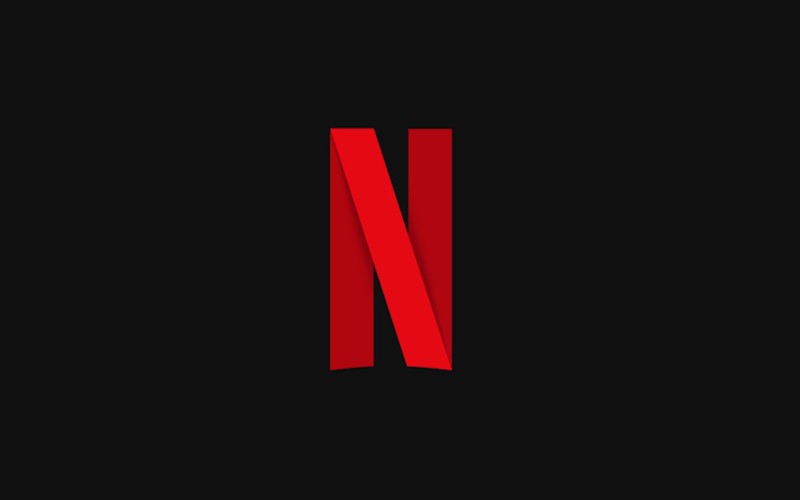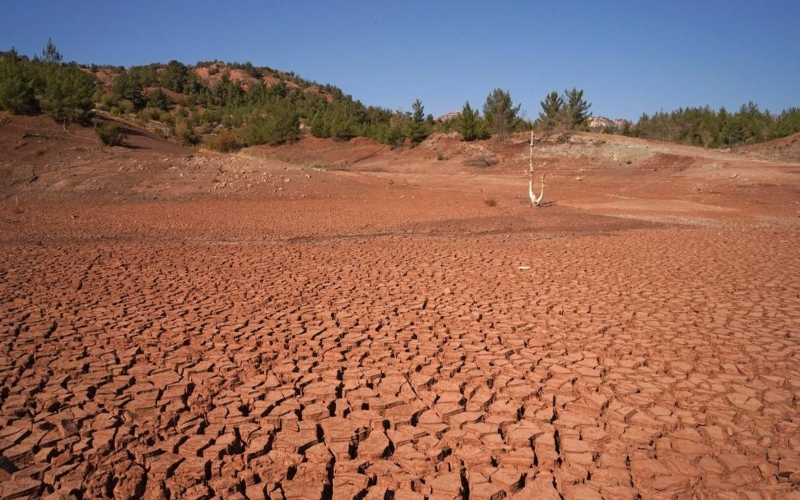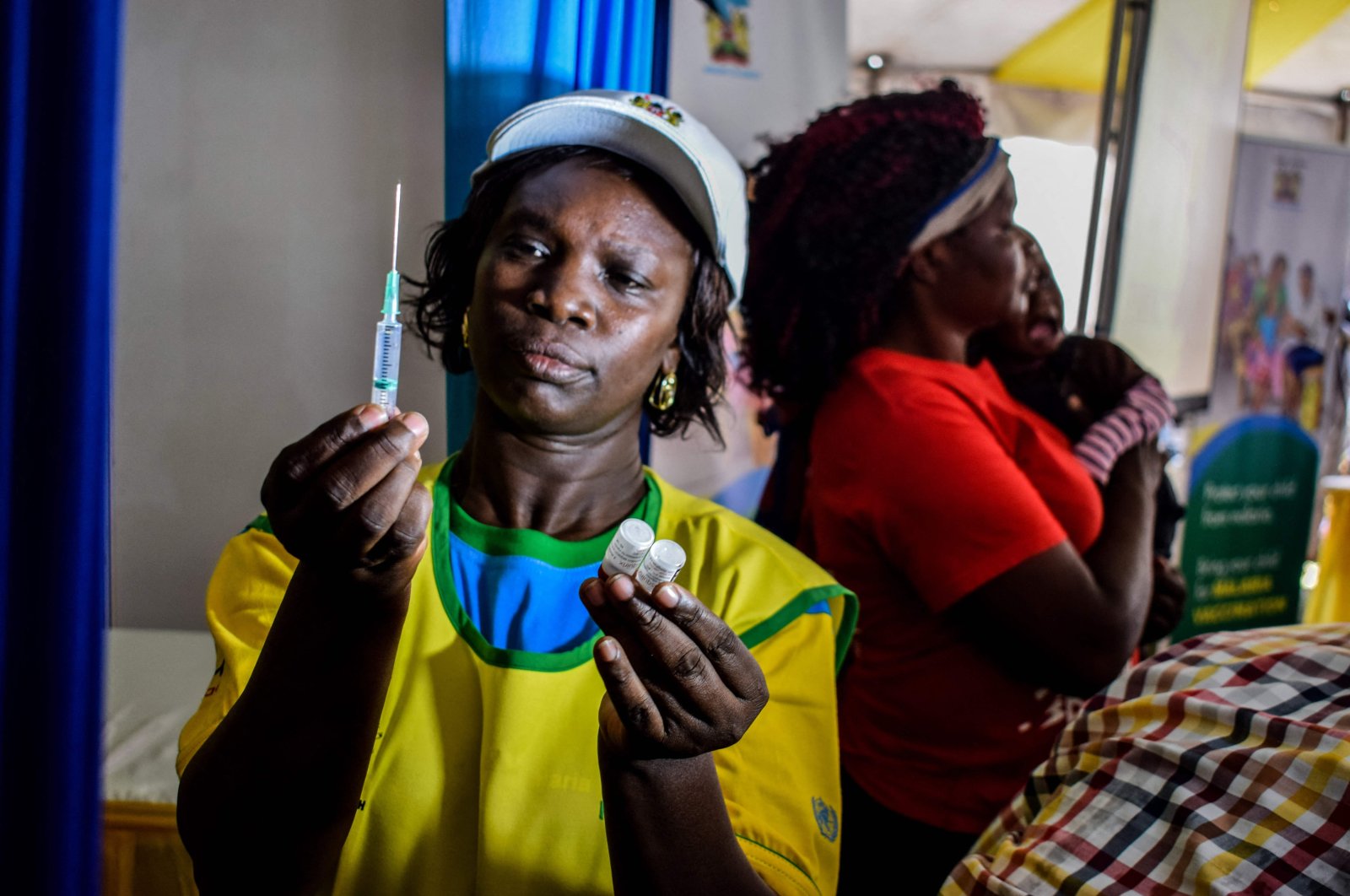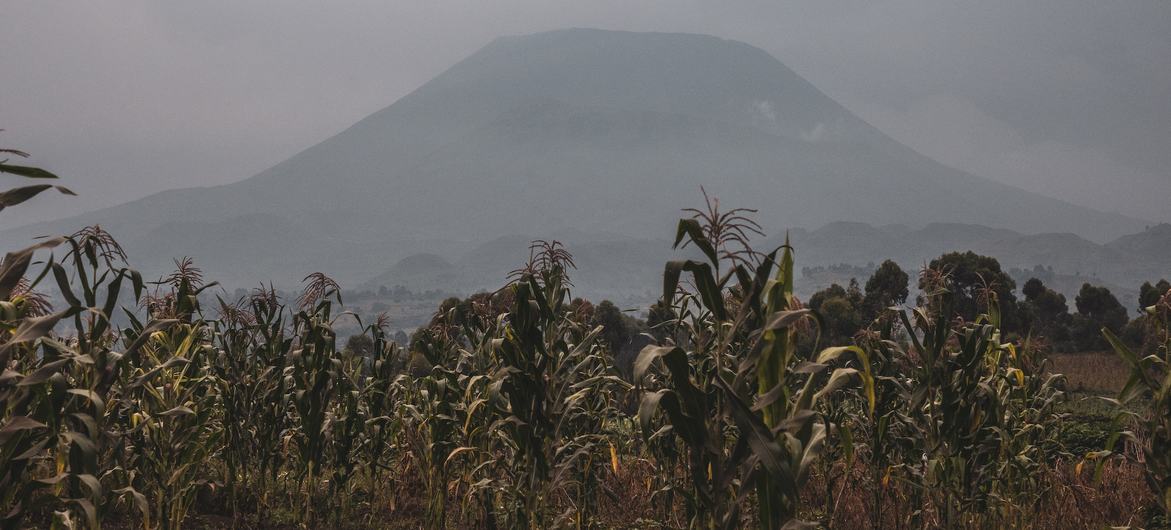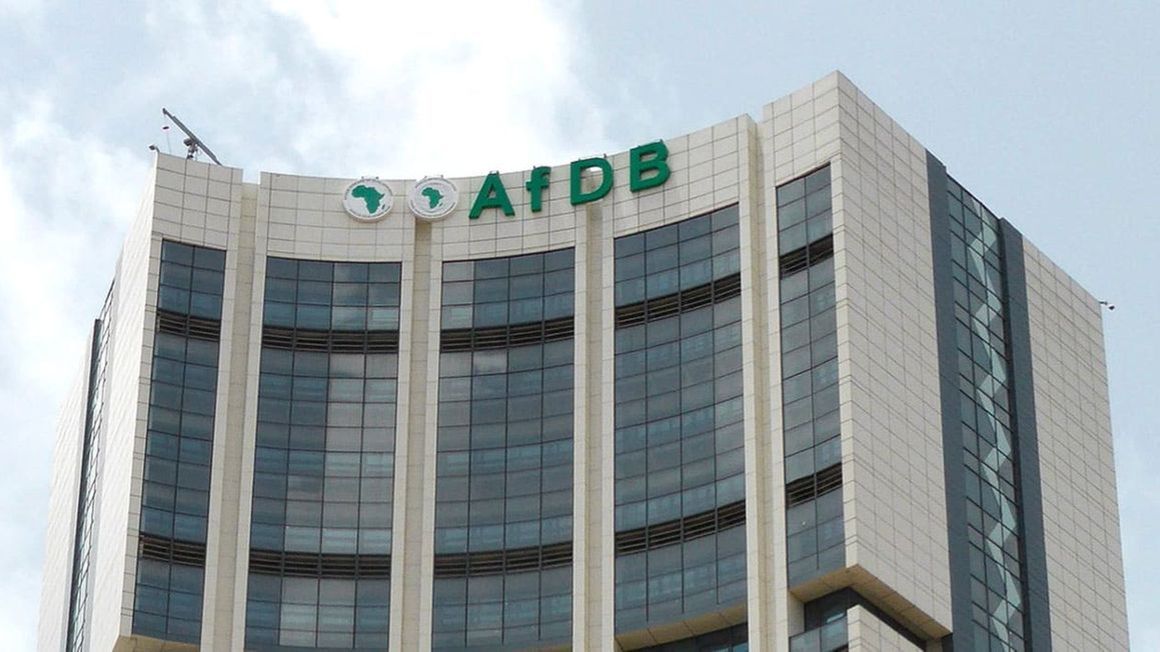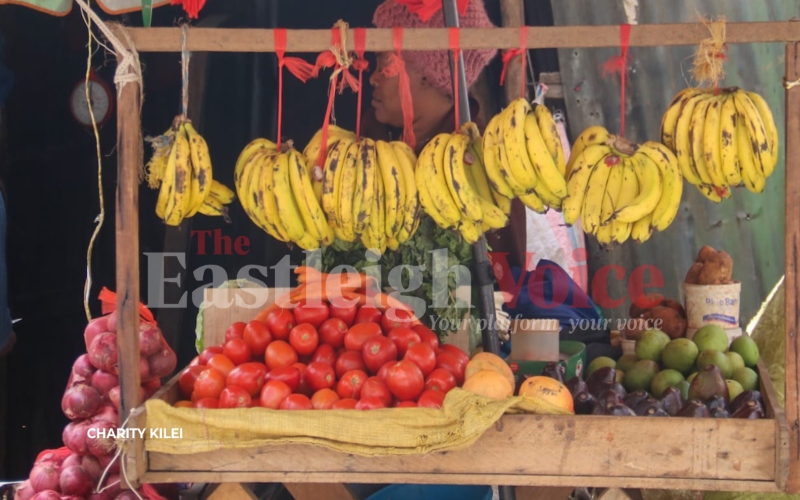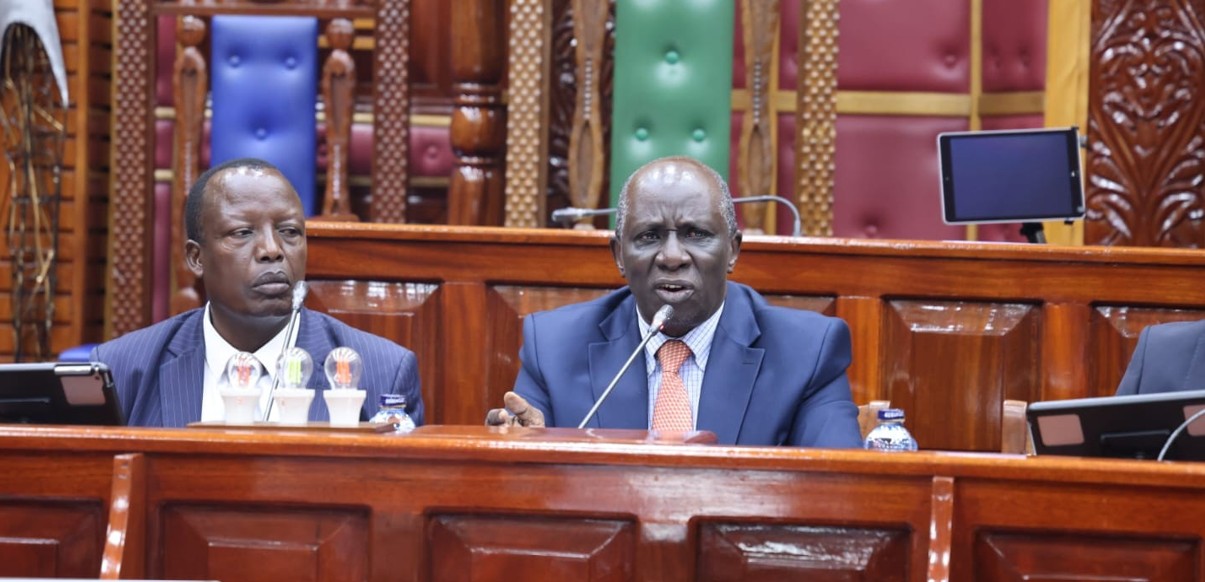From Gen Z protests to shilling's performance: What shaped Kenya in 2024
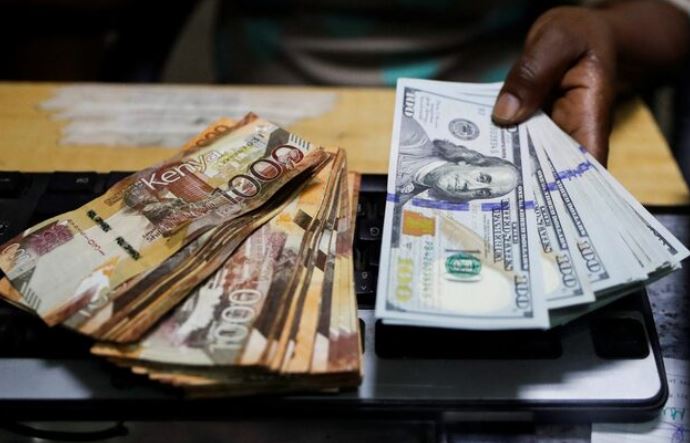
The year 2024 experienced a series of interest rate hikes on loans, a crucial go-to remedy by households in times of constrained disposable incomes such as now.
In the one year to December 2024, Kenya’s economic landscape has been deeply shaped by significant local and international events that have had wide-ranging effects on its prospects.
From global conflicts to domestic policy changes, the country’s economic trajectory has faced numerous hurdles while also showing resilience in some sectors.
More To Read
- Kenya ranked Africa’s most competitive economy in International Institute for Management Development 2025 Index
- Gen Z protests in Kenya: Key facts (2024-2025)
- UN human rights experts visit Kenya privately amid concerns over crackdowns, civic freedoms
- Kigame seeks court nod for private prosecutions over 2024–2025 protest abuses
- Police to deploy senior investigators as Rex Masai inquest uncovers new witnesses
- Ruto unveils Sh4 trillion development plan to propel Kenya to first-world status
Among the local concerns are the performance of the Kenyan shilling against the US dollar, banking interest rates and their effects on households, rising taxes, and the Gen Z protests in June and July.
Firstly, the shilling began the year on arguably a bad note, having weakened against the dollar to a low of 161 as of January, from a high of 100 in early 2020 when it started dwindling.
The local currency weakening against the dollar meant local importers were spending more to acquire the dollars.
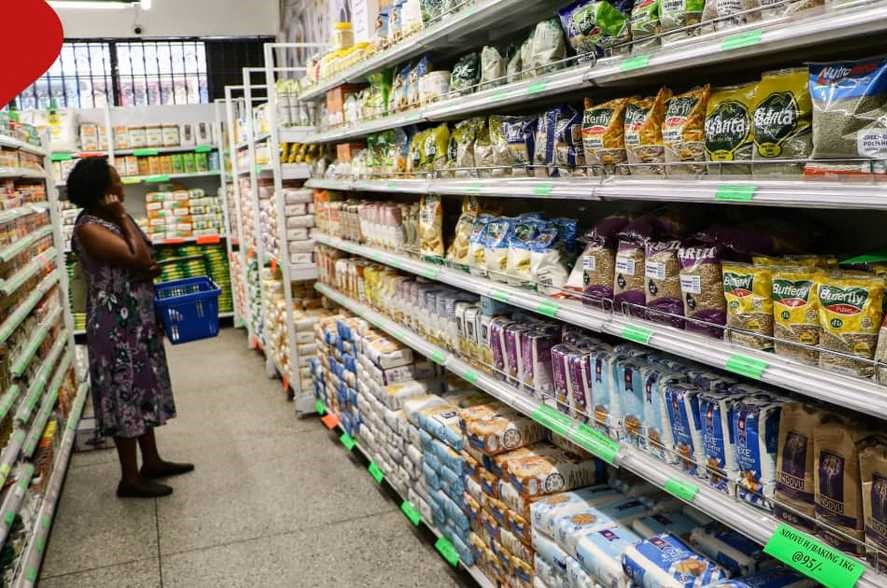 A woman looks at the prices of commodities inside a supermarket. (Photo: Handout)
A woman looks at the prices of commodities inside a supermarket. (Photo: Handout)
Rising commodity prices
Consequently, the burden is often passed down to consumers with increased commodity prices.
Kenyans, as a result of this, grappled with increased commodity prices sometime early this year, pushing the level of inflation to an annual average of 7.5 per cent, above the central bank's target range midpoint of 5.0 per cent.
However, sometime in February when the local currency began to regain its footing against the greenback, there was a sign of relief to consumers, as a continued gain meant less cost of importation, thus reduced commodity prices.
As of April this year, for instance, the shilling had gained half the value it had lost in four years. It strengthened to 131 in two months to the end of March, representing a 30-unit value gain.
The gain was attributed to the successful settlement of the inaugural $2 billion (Sh259 billion) Eurobond buyback plan, where the government paid back $1.5 billion (Sh194.5 billion) in February, boosting investor confidence.
As of this month, the Central Bank of Kenya (CBK) has quoted the local currency at an average of 129 against the dollar, signalling continued strengthening and resilience after the past year of weakening.
As a result, the country has also witnessed a reduction in prices of some food and non-food commodities in the past months, pushing down the level of inflation to 2.8 per cent in November.
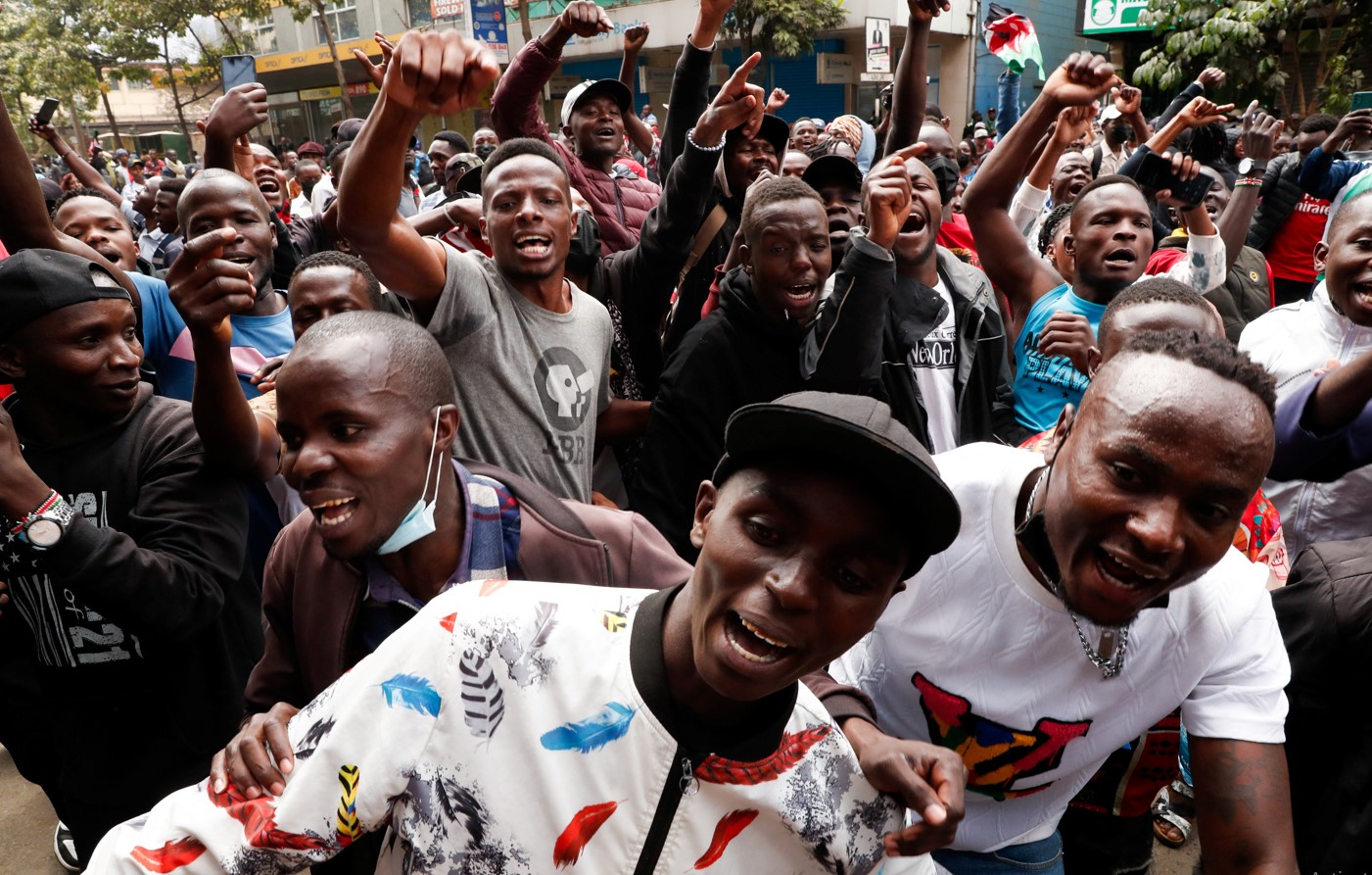 Protesters participate in an anti-government demonstration following nationwide deadly riots over tax hikes, in Nairobi, Kenya July 23, 2024. REUTERS
Protesters participate in an anti-government demonstration following nationwide deadly riots over tax hikes, in Nairobi, Kenya July 23, 2024. REUTERS
Taxation
Evident from policy papers and recent statistical reports, the country is at a crossroads in matters of taxation, from the perspective of this administration which is now over two years old.
The country is reportedly choking under huge public debt (68 per cent of GDP) with attendant servicing costs, a situation that has affected the country’s financial health, exacerbated by overall revenue underperformance coupled with a global economic crisis.
The impetus for increased revenue collection is viewed by this administration as one of the interventions towards arresting a widening fiscal deficit and thus expanding the fiscal space.
Enhancing domestic resource mobilisation, a noble cause, is equally seen as a way of addressing reduced export revenue and encouraging foreign direct investment.
As evidenced in the 2023 Medium Term Revenue Strategy (MTRS) by the National Treasury, the government seemed to be on an overdrive to raise taxes.
Anti-tax hikes protests
The strategy eventually played out in the Finance Bill, 2024, which proposed several new and additional taxes.
It sparked a wave of collective action primarily driven by Gen Z, protesting against the proposed tax hikes, which led to the President refusing to assent the Bill into law and referring it to Parliament for withdrawal.
The whole play around the proposal to increase taxes, introduce new taxes and the consequent Gen Z protests, evidently had a beating on the country’s economic prospects.
A survey by the CBK revealed that the Gen Z-led demos in June dented the country’s growth prospect to moderate in the medium term.
Conducted in July, the survey which inquired about company heads' level of optimism in the growth prospects, revealed a moderated business optimism for the sector and Kenyan economic growth prospects.
This is mainly on account of uncertainty around protests and consequent disruptions to business activity.
The outlook is a downgrade from the previous survey in May where CEOs exhibited sustained business optimism for company, sector, Kenyan, and global growth.
In its October 2024 sub-Saharan Africa economic outlook, the International Monetary Fund (IMF) also said the possible financial constraints arising from the rejection of the Finance Bill, 2024 amid the youth-led protests, could impact the country's GDP growth in 2025.
 Police officers try to disperse protesters during a demonstration against the Finance Bill 2024/2025 in Nairobi, on June 25, 2024. (Photo: Reuters)
Police officers try to disperse protesters during a demonstration against the Finance Bill 2024/2025 in Nairobi, on June 25, 2024. (Photo: Reuters)
GDP growth forecast
In light of the challenge, the lender lowered the GDP growth forecast for the country to 5.0 per cent, a downgrade from the previous projection in April when it projected the economy to expand at a pace of 5.3 per cent in 2025.
The year 2024 experienced a series of interest rate hikes on loans, a crucial go-to remedy by households in times of constrained disposable incomes such as now.
In February, the Central Bank of Kenya hit borrowers with the highest loan rate in 12 years, increasing the base lending rate to 13 per cent.
This was a move aimed at curbing the stubborn inflation and pulling a handbrake on the free fall of the Kenyan shilling which had weakened to 160 to the dollar by then.
The trend was also influenced by the Federal Reserve's rate hikes in the United States, with the central bank approving an increase in July 2023 that raised interest rates to their highest level in over 22 years.
The increase brought the target range to 5.25-5.5 per cent, a level the US Federal Reserve maintained for most of 2023 and into this year, until September, when it implemented its first rate cut, reducing it by 50 basis points to a range of 4.75 to 5.0 per cent.
In its most recent review in November, the Fed again lowered the benchmark policy rate, by a quarter point, bringing it to a range of 4.50-4.75 per cent.
When the US cuts the benchmark interest rates, other economies globally more than often follow suit when revising their country-specific base lending rates.
The CBK, through its Monetary Policy Committee, typically aligns the direction of its Central Bank Rate (CBR) with the US Fed rate.
This trend is evident in the past three meetings, where the committee reduced Kenya’s base lending rate, starting with a cut from 13.0 to 12.75 per cent in August.
The second cut came in October, from 12.75 per cent to 12.0 per cent. The most recent one in December saw the rate slashed further to 11.25 per cent.
Ideally, a Fed rate hike reduces dollar supply in the market, making the currency stronger when trading against local currencies such as the Kenyan shilling.
When the Kenyan shilling tumbles against the greenback, it means importers in the country will be incurring extra costs to buy the scarce dollars for imports, hence costlier commodities that eventually trigger inflation to rise.
To curb this, the CBK adjusts the base lending rate upwards, similarly matching the direction of the US Fed Rate in fighting inflation.
Cost of credit
The vice versa of the aforementioned is true. When inflation levels begin moving towards the statutory target in both economies, the governing bodies would then enact interest cuts to give the economy some breathing space, enhancing the money supply as the cost of credit eases.
Generally, the year experienced historic levels of the cost of credit, making it difficult for most households in the country to access loans for survival.
This occurred as lenders also began incorporating risk-based interest rates on loans to mitigate the rising default rates amid challenging economic conditions, making it more expensive to access credit.
 Since Israel launched its response to the October 7, 2023 attacks by Hamas, Palestinians have moved about Gaza seeking food and shelter. REUTERS/Mohammed Salem
Since Israel launched its response to the October 7, 2023 attacks by Hamas, Palestinians have moved about Gaza seeking food and shelter. REUTERS/Mohammed Salem
War in Gaza
The ongoing conflict between Israel and Palestine has also had far-reaching consequences, with Kenya's economy feeling the impact through disruptions in global shipping.
The war has intensified tensions in the Middle East, particularly as attacks by the Houthi rebels targeting ships transiting through the Suez Canal have caused significant delays in the vital trade route.
The Houthis, in their demand for a ceasefire in the Gaza Strip, have targeted vessels passing through this crucial waterway, further exacerbating the already strained global supply chains.
For Kenya, a nation that heavily relies on imports and exports through the Suez Canal, this disruption has resulted in delays in shipments of key goods, including fuel and essential supplies, threatening to drive up costs for businesses and consumers alike.
The ripple effect of these shipping delays has reverberated through the country’s economy, with rising inflation being one of the immediate consequences.
With the likelihood of prices of goods increasing due to shipping bottlenecks, Kenyan households will eventually feel the strain, especially in sectors like retail, manufacturing, and transportation.
The disruption has also put pressure on Kenya’s trade relations with other countries, as the uncertainty surrounding the Suez Canal has made it harder to predict delivery timelines and costs.
Top Stories Today
